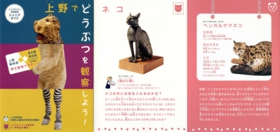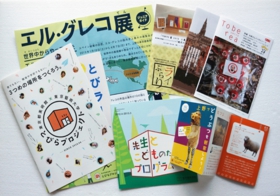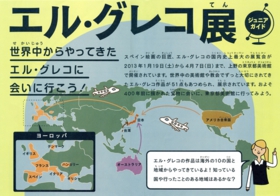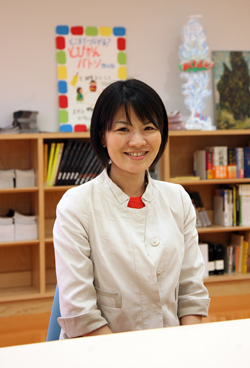
Sawako Inaniwa, a curator at the Tokyo Metropolitan Art Museum
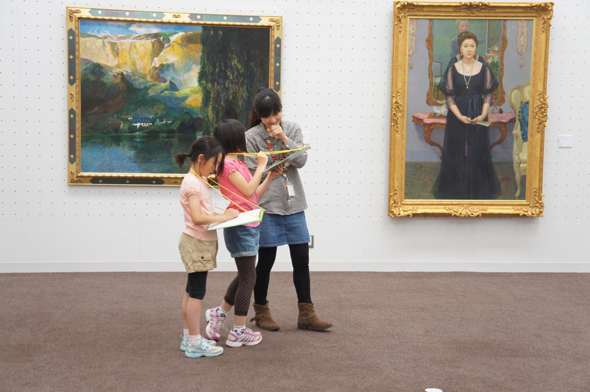
"Bijutsu Tanteidan! Iro Iro Book," or art detectives! a color sample book
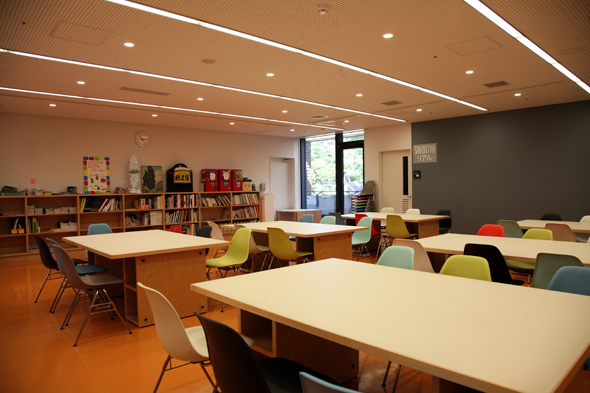
Art study room in the networking activity wing
We talked with Sawako Inaniwa, a curator at the Tokyo Metropolitan Art Museum. This interview was conducted in June 2013.
Q: I have heard that you have carried out the museum's new project that promotes communication. Could you explain about the project?
Inaniwa : The art communication project was newly inaugurated along with art exhibition activities after the renovation was completed. In the project, the museum is perceived as a place where new communication is born. It is a place not only for seeing art exhibitions, but also for creating a mechanism that enables people to share their experiences of encountering artworks with many other people, that is to say, sharing of their thoughts and feelings which are brought about through artworks. We aim to create a new type of community based in the museum through art.
Specifically, for example, we began to conduct "Tobira Project," a collaboration work with the Tokyo University of the Arts located next to the museum. It is a project in which art communicators who actively participate in the museum activities are recruited from the public, and their wishes, such as "It is great if the museum is a place like this" or "It is wonderful if this happens in the museum," will be realized. Also, a project called "Museum Start i-Ueno" that supports children to exhibit their works in the museum for the first time started this year.
Q: Could you explain "Tobira Project" and "Museum Start i-Ueno" in a little more detail?
"Tobira Project" started just after the renovation was completed. It is a project to create a mechanism with which art communicators who are recruited from the public take part in the museum activities in a responsible way. A nickname of art communicators is "Tobira-a" which is a combination of the words "Tobi" for "Tokyoto Bijutsu-kan," or the Tokyo Metropolitan Art Museum, and "Sekai no 'Tobira' wo Akeru," or open the door of the world. "Tobira-a" are not supporters of the museum but players who actually carry out the museum activities with the museum staff. Now, about 130 "Tobira-a" are working. There were much more people who wanted to participate in the museum activities than the museum expected. When we recruited them, the number of applicants were five times as many as the quota. The largest percentage of the applicants were people in their 20s and 30s. Many people who had an ability to change the image of traditional, voluntary museum activities applied for "Tobira-a."
Although one year has just passed since the the launch of this project, an amount of the activities of "Tobira-a" is more than we have imagined. The number of times "Tobi-lab," which is a preliminary meeting about independent plans or a study meeting, are held have reached 114 in a year, so they have actively been engaged in the project. There are also many lectures. A total of 50 lectures have been held. For details of the activities, please search the term "Tobira Project" on the Internet and refer to the website. A number of original activities have been devised.
In this cooperative project, Katsuhiko Hibino, an artist and professor at the Tokyo University of the Arts, acts as a coordinator. "Tobira Project" is operated by Tatsuya Ito, an assistant professor at the same university, and Michiko Kondo, an assistant at the same university, as well as the museum staff. Ito and Kondo have worked as full-time specialists for "Tobira Project" at the project room in the Tokyo Metropolitan Art Museum. They have cooperated with a team of the museum curators and managed the project.
The characteristic of "Tobira Project" is that two different organizations, the museum and the university, work together both in name and reality, which indicates a level of the museum's earnestness for the new project. This operating structure has actively been responded by the public at large, including "Tobira-a." Also, they, as equals, have discussed how the museum should function, and I now actually feel that a steady step toward producing a community through art is being made.
There is a key concept "the creation of the third place that is not a house or workplace." We have carried out the museum activities, hoping that the museum will be alive in people's minds as "the third place."
"Tobira Project" started in the first year of the museum's reopening. The project that have just started in the second year is "Museum Start i-Ueno." Briefly speaking, this is a project that supports children to exhibit their works in the museum for the first time, and is targeted at children and their families. This project is conducted in cooperation with nine museums and cultural facilities located in Ueno Park. Its key concept is "the cooperative learning that is fostered through dialogues and empathy." It does not take a form in which individuals learn from somebody who teach them. We will make programs in which children have a conversation with other children or adults and learn together in a fifty-fifty relationship that values children's spontaneity. "Tobira-a" will be actively involved in this project. "Tobira Project" and "Museum Start i-Ueno" are organically linked, and new places of learning will be developed. Please visit the website of "Museum Start i-Ueno" and see details of the project.
Q: Are lecturers the museum's curators? Do children also create artworks?
"Museum Start i-Ueno" is operated by teaching staff of the Tokyo University of the Arts and museum staff in the same way as "Tobira Project." Outside experts will support each program as lecturers.(continued in the right column)
We will make art programs in which children with disabilities are easy to participate and plastic art workshops in which scrap wood is utilized.

Q: How did participants in workshops recognize or evaluate the project? Are workshops popular among children? Have you cooperated with neighboring educational institutions, including schools?
Some people who participated in workshops said that they would participate in the next workshop, and applied for the next one. Since the museum is under the direct control of the Tokyo Metropolitan Government, there are many free or low charge plans for which a wide range of people can apply. Also, we have made an effort to cooperate with schools. For example, elementary school students of Matsuba Primary School, Heisei Primary School and Yanaka Primary School visited the museum in June 2013, and a special class for art appreciation was held in an exhibition room on the museum's off day. Of course, "Tobira-a" also took a lively part in the class.
Fortunately, many people have applied for or made inquiries about the art communication program, so the museum staff continue to make an effort in order to meet their requests.
Q: I have heard that relatively young people participate in "Tobira Project." What kind of people are they?
People aged 18 and over can apply for the role of art communicators. Now, there are several art communicators aged 18. Other art communicators are in their 20s through 60s, and the number of them is distributed evenly throughout the all age groups. There are also a few art communicators in their 70s. In the second year's recruitment, the largest number of applicants were women in their 20s and 30s, and the number of them were seven times as many as the quota. The first test was an essay test, and the second was a group interview. Generally, people aged 60 and over, who have enough time on their hands, often participate in a museum's volunteer projects. However, in the case of "Tobira Project," the largest number of participants are in their prime. Some of them take a paid holiday and participate in "Tobira Project." Although activities of "Tobira-a" are voluntary ones, they are not called "volunteer," because the objective of their activities is easily understood if their role is defined as "a person who promotes communication via art" other than a volunteer. Also, if the existing word "volunteer" is used, they might be thought as supporters of the museum, so the word does not fit the role of "Tobira-a" who are also players.
Q: The term of "Tobira-a" is three years. Do they start to do something new after finishing their three-year term?
"Tobira Project" has just gone into its second year, so how the project will be developed is still unclear.


The reason we have set the term of three years is that it is desirable for them to put what they have learned in the activities of "Tobira Project" to good use in other fields. In other words, another purpose of this project is to develop human resources who create communities through art in modern society.
Q: So, in the future, there is a possibility that not only the museum staff but also people who worked as "Tobira-a" and external supporters will be active in other fields, isn't it? What do you expect while operating the project?
By launching "Tobira Project," I can particularly understand that there are many people, especially younger generations, who want to actively participate in the museum activities. The museum is a spiritual place to which artworks and people come and go. It is the reason many people want to be involved in the museum activities. Previously, the museum had not had a framework and scope in which people at large can be actively involved, so it was difficult to link their energies to the museum activities. However, if "Tobira-a" who have experienced and completed "Tobira Project" make use of their identities as "Tobira-a" and obtained know-how and become core members of new communities, the museum will be considered as a highly-functional social space. Although it seems to be a long way to go, if we continue to think and discuss with "Tobira-a" and carefully make progress, the future of the project will be clearly defined. After all, although the important thing is to "enjoy," we intend to promote the project while sometimes having serious discussions.
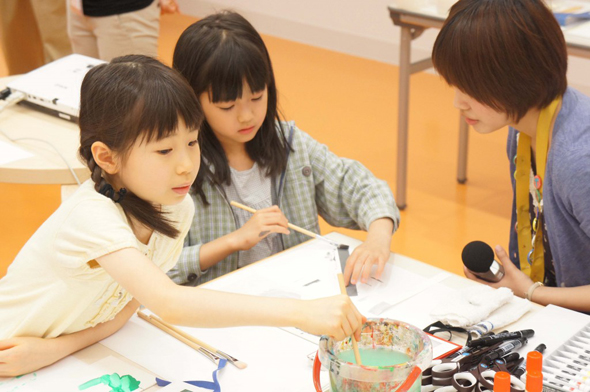
"Bijutsu Tanteidan! Iro Iro Book," or art detectives! a color sample book

Sawako Inaniwa, a curator at the Tokyo Metropolitan Art Museum












